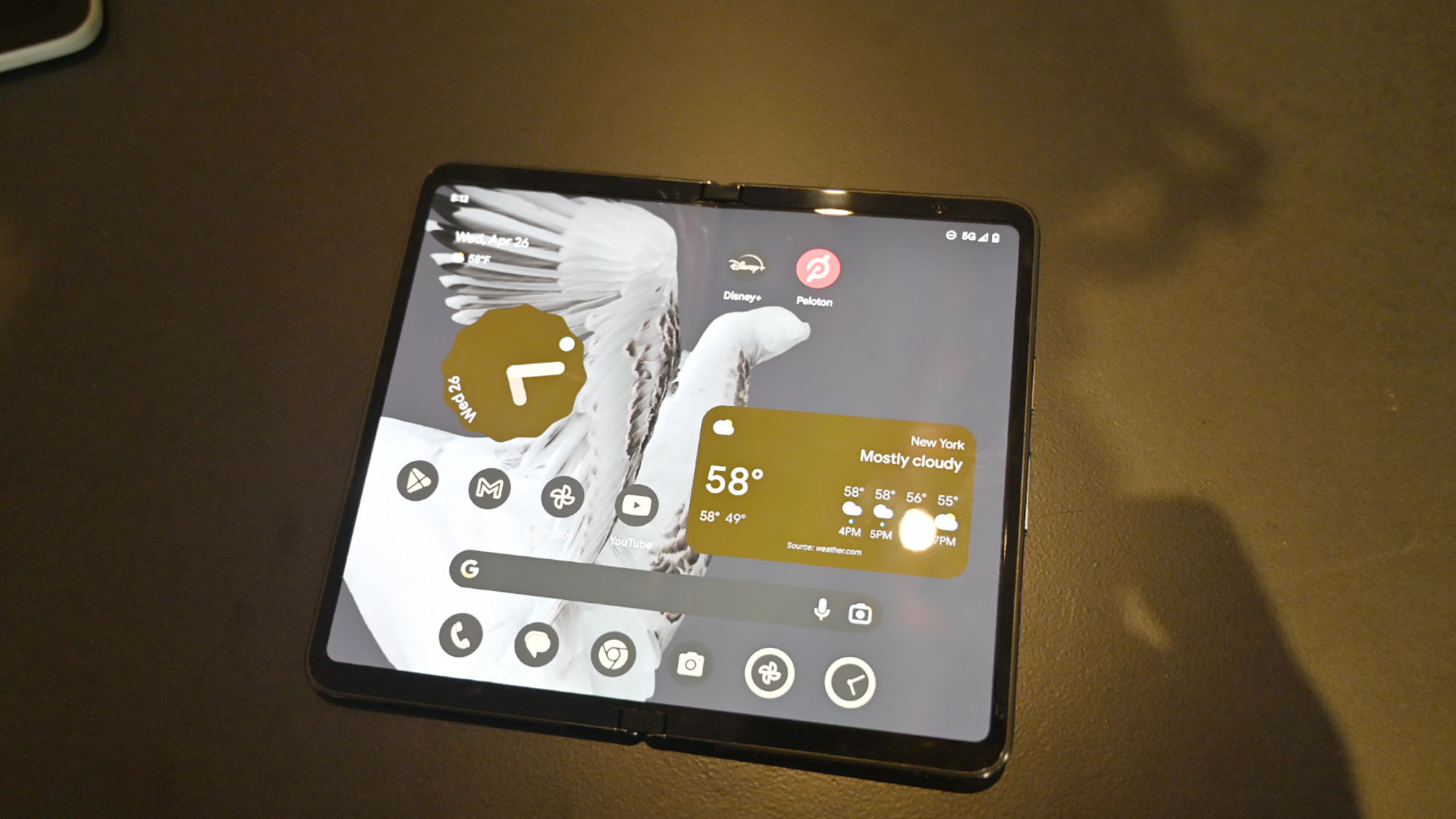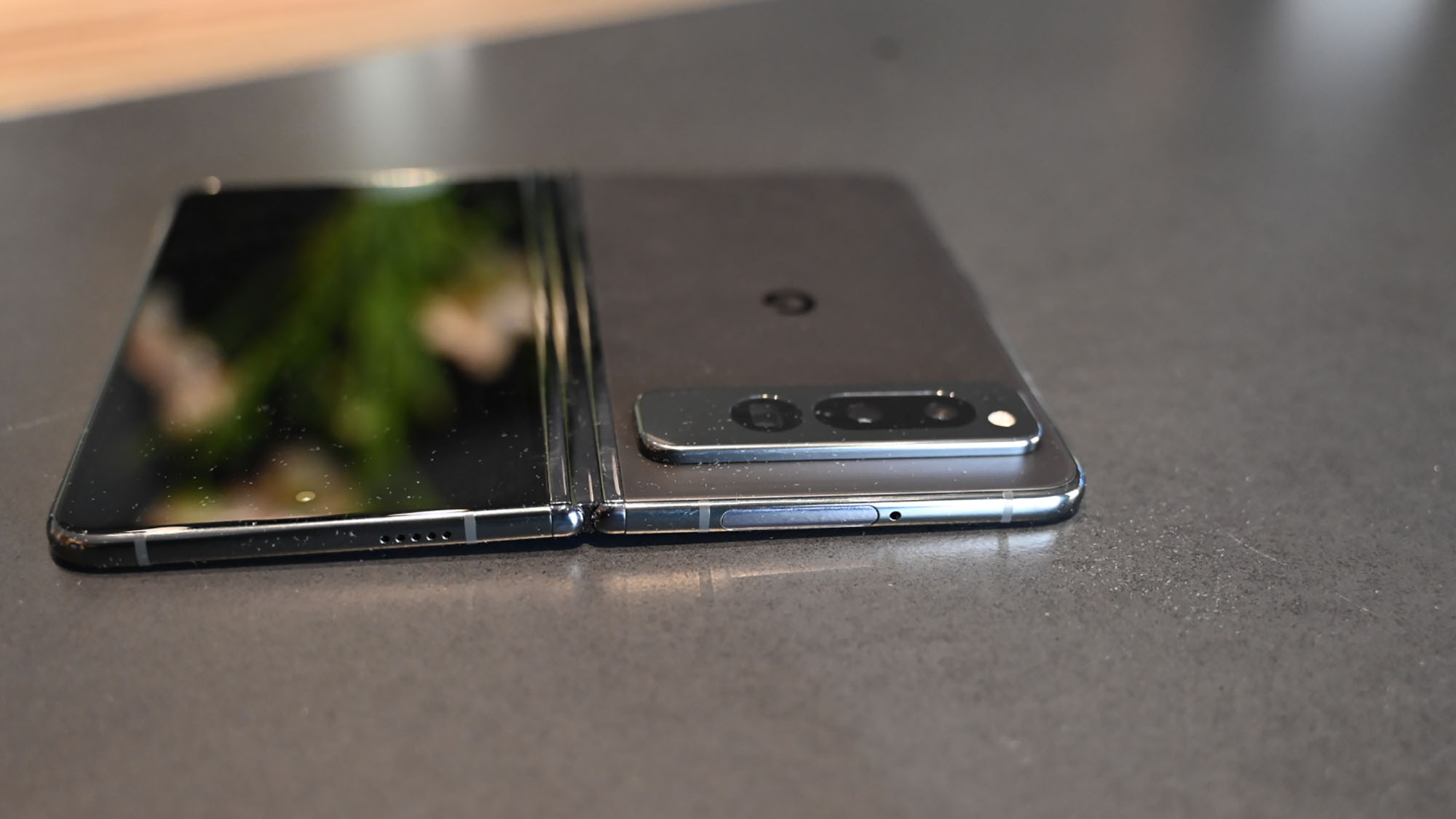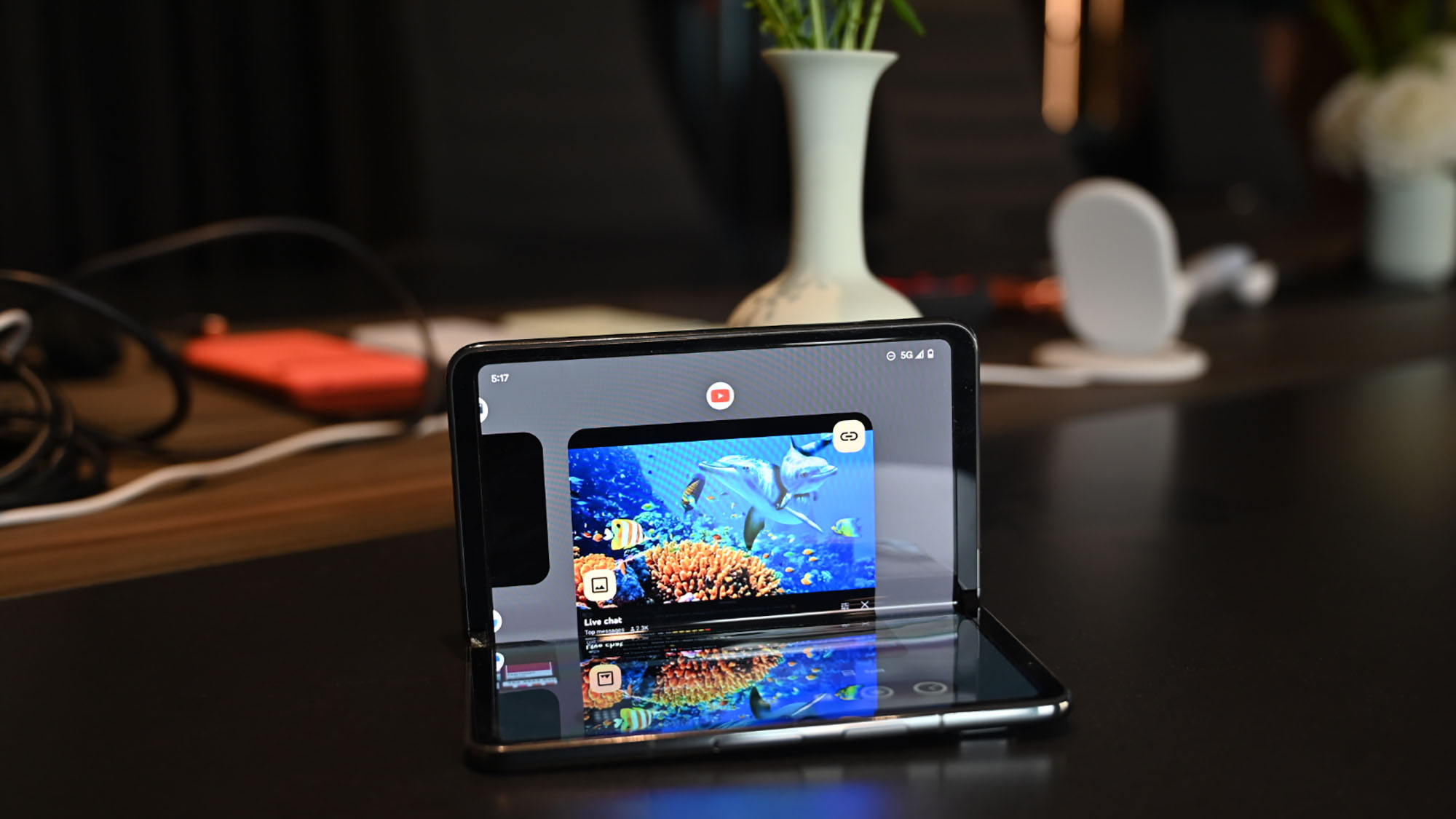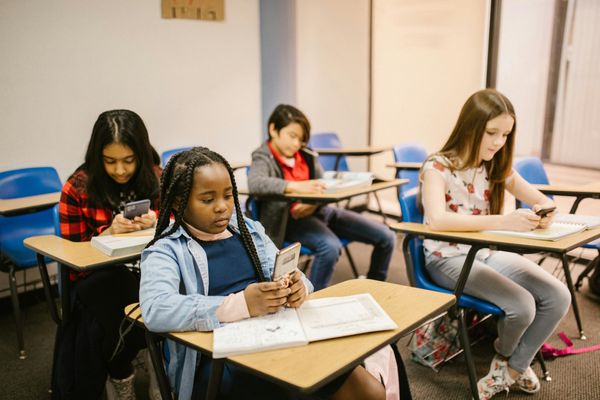
Sometimes, it makes sense to wait, especially when it comes to a new trend. Take the burgeoning foldables market. While Samsung’s been enjoying success with its Galaxy Fold lineup of smartphones, others like the Motorola Razr haven’t made a big a splash as expected. And then you have smartphones like the LG G8X ThinQ that will only exist as a fond, quirky memory amongst the most die-hard of fans.
But for Google, the wait is officially over as the company has finally announced the long-anticipated Pixel Fold. The company’s first foldable, the Fold’s main claim to fame is that it’s the thinnest foldable on the market. And believe me, seeing is believing with this thing. But as impressive as the design is, Google didn’t stop there, outfitting the ultra-premium phone with the company’s proprietary Tensor G2 processor as well as the company’s world-class cameras, that have emerged victorious in many a camera face-off.
And as intriguing as all of that is, foldable fanatics might be put off by the bank account draining $1,799. (Hell, as someone who buys her phone outright, I know I am). But I had a chance to get some hand-on time with the Pixel Fold, and I have to say, I’m tempted to plunk down the cash. Read on to learn why.
Google Pixel Fold pricing and configurations
I hope you’ve got a spare body part or two lying around, because you might need it to afford the Pixel Fold. When it ships next month, the foldable will cost a wallet-draining $1,799 U.S. (£1,423 U.K.). The smartphone comes equipped with a Google Tensor G2 processor with a Titan M2 security coprocessor, 12GB of RAM and 128GB of onboard storage.
Google Pixel Fold design
Since they’ve hit the market in earnest, I’ve always been intrigued by smartphone OEMs’ foldable design. To date, they’ve been rather chonky in large part due to the hinge mechanism that makes a foldable, well, fold. But imagine my surprise when I first laid eyes on the Pixel Fold and its incredible svelte figure. Weighing 10 ounces, the Fold measures 5.5 x 3.1 x 0.5 inches when folded and 5.5 x 6.2 x 0.2 inches when unfurled. That’s slimmer than my Samsung Galaxy S23 Ultra (8.3 ounces, 6.4 x 3.1 x 0.35 inches).
Compared to the Samsung Galaxy Z Fold 4 (9.3 ounces, 6.1 x 2.6 x 0.55-0.62 inches (folded), 6.1 x 5.1 x 0.21 inches (unfolded)) and Surface Surface Duo 2 (10 ounces, 5.7 x 3.6 x 0.43 inches (folded), 5.7 x 7.3 x 0.21 inches (unfolded)), the Pixel Fold is indeed the slimmest.

Upon seeing how thin the Fold actually is, I was concerned about durability, but the Google rep giving the demo reported that the hinge has been torture tested for up to 200,000 folds, matching Samsung’s Z Fold’s durability claims. Plus, it’s made from a multi-alloy steel and the displays are made from Corning Gorilla Glass Victus. The Pixel Fold has an IPX8 rating for water resistance. When I held the phone in my hands, the phone felt incredibly sturdy. Am I still going to inwardly cringe when I see someone slipping this bad boy into their back pants pocket? Absolutely. But now, I feel more confident that it’s not going to break into pieces if sat upon.

So let’s take a quick tour of the phone starting with the rear panel. The external display is made of glossy, tough Corning Gorilla Glass Victus with a 9.5-megapixel pinhole camera at the top in the middle of the display. The other half of the rear panel is made of a matte aluminum finish with a shiny raised module that houses the trio of cameras (48MP, 10.8MP and 10.8MP) at the top with a gleaming G towards the middle.
Flipping the phone over reveals the massive 7.6-inch display surrounded by a bezel I wish was a little thinner. You’ll find a 8MP camera in the top right corner. The sides of the phone are made of gleaming aluminum. Buttons for power and volume sit on the right while the USB Type-C port resides along the bottom on the right half of the phone.
Google Pixel Fold display
So many displays! Aside from the rear panel, the Pixel Fold is lousy with displays. First, you have the 5.8-inch panel. It has a 2092 x 1080 OLED at 408 pixels per inch (ppi) with 17.4:9 aspect ratio and a 120Hz refresh rate. The interior display measures 7.6 inches with a 6:5 aspect ratio. The 2208 x 1840 OLED panel at 380ppi has a 120Hz refresh rate.

I didn’t get to give the Fold a really close look, but I liked what I saw so far. Just the home screens that I saw on each panel delivered deep blacks, vivid greens, stunning whites and rich browns. I wouldn’t mind reading a few comics or watching a few Legend of Zelda: Tears of the Kingdom theories on the larger display. Like most foldables, I did see a slight crease.
Google hasn’t released details on color reproduction, but going up against Samsung, the king of extreme vividness, Google has its work cut out for it. When we measured how the Z Fold 4 stands up on the DCI-P3 gamut, it gave us a result of 146.7% on the front panel and 158.7% for the main screen. while the Surface Duo 2 only reached 87.7%.

The Pixel Fold has an estimated brightness of 1,200 nits in HDR mode and 1,500 nits standard on the external display. The interior displays are rated for 1,000 nits (HDR) and 1,550 nits standard. During our lab tests, the Galaxy Z Fold 4 averaged 870 nits on the front display and 905 nits for the main screens. The Surface Duo 2 got 672 nits.
Google Pixel Fold performance
I was a little disappointed to see that the same processor that’s powering the Pixel Tablet, Pixel 7 Pro, Pixel 7 and Pixel 7a is powering this $1,800 smartphone. But c’est la vie, I guess. It’s not that it’s a bad chip, not by any means. But if you’re making an ultra-premium device, I’m expecting some high powered silicon that makes a clear delineation between the entry level and mid-tier products. The company definitely has to work on that in the future.
On the bright side, since we’ve tested several of these phones, we can get a pretty good idea of what to expect from the Pixel Fold. Take the Pixel 7 Pro’s 3,046 Geekbench 5 result. It’s a solid score, but no match for either the Surface Duo 2 (Qualcomm Snapdragon 888) or Galaxy Fold Z 4 (Qualcomm Snapdragon 8+ Gen 1) which notched 3,384 and 3,831, respectively.

When we ran the Jetstream 2.0 benchmark (higher is better), the Pixel 7 Pro posted a score of 121.1. It successfully staved off the Galaxy Z Fold (87) and Surface Duo 2 (92.9).
Running the Adobe Premiere Rush video transcoding test where the tablet converts a 4K video to 1080p resolution, the Pixel Pro 7 produced a time of 47 seconds. The Surface Duo was a little faster at 0:46 and the Galaxy Fold Z 4 being faster still at 0:45.

On the the Wild Life Unlimited benchmark which tests the GPU, the Pixel Pro hit 11 frames per second. The Samsung got 16 fps while the Surface Duo 2 only managed 8 fps.
During my demo, I tried out some of the multitasking features, launching two apps side-by-side and dragging and dropping an image I copied from a website to a Google Doc. The interaction was quite agile, but I want to see how the phone holds up to a serious workload including running at least 10 apps in the background.
Google Pixel Fold battery life
Google is claiming “beyond all-day battery life” which definitely got my attention. It takes it a step farther estimating that the phone with its three displays can last 72 hours in Extreme Battery Mode. We’ll definitely be the judge of that. The Galaxy Fold Z 4 main display lasted 9 hours and 6 minutes on Adaptive Smoothness mode and 9:17 at 60Hz. The outer panel clocked in 7:55 on Adaptive Smoothness and 9:31 on 60Hz. Meanwhile, the Surface Duo 2 tapped out at 7:38.
Google Pixel Fold cameras
Quiet as it’s kept, Google makes some great smartphone cameras. In fact, Pixel phones really hold their own during our camera shoot outs, some coming out as the surprise winner. So it makes sense that the company are bringing those amazing cameras to the Pixel Fold. In terms of specs, the Pixel Fold’s primary shooter is pretty close to even with the Galaxy Z Fold 4, the f/1.7 aperture is excellent and paired with the 1/2" sensor and quad-pixel binning with the 48MP Quad PD sensor it should deliver great low-light photos. The ultrawide is again roughly even with the Z Fold 4, but the slightly larger pixels should give it an edge in low-light.

Google has the reach advantage of the Z Fold 4 with its 5x optical zoom compared to 3x for the Z Fold 4. The f/3.05 aperture on the telephoto could be better, but that's probably a worthwhile trade-off as low-light telephoto shots aren't a primary focus. Given what we've seen Google do with lesser hardware than this, it should easily deliver the best photos of any foldable.
Bottom line
Google’s finally made the plunge into the foldable arena and without any testing, I’m moderately impressed. I’m absolutely blown away by the design and want to know exactly how Google got the Pixel Fold to its waifish dimensions. I’m glad to see Google didn’t try to recreate the wheel with its cameras, because as of right now, they’re some of the best in the industry. And I’m never going to say no to more efficient multitasking. As for the battery life, I’ll believe it when I see it.
But man, for $1,799, I wanted a higher-end processor ala the iPhone 14 Pro and Pro Max. I don’t think it’s too much to ask for an almost $2,000 smartphone. But I’m holding my final judgment for our actual testing and you should too.







